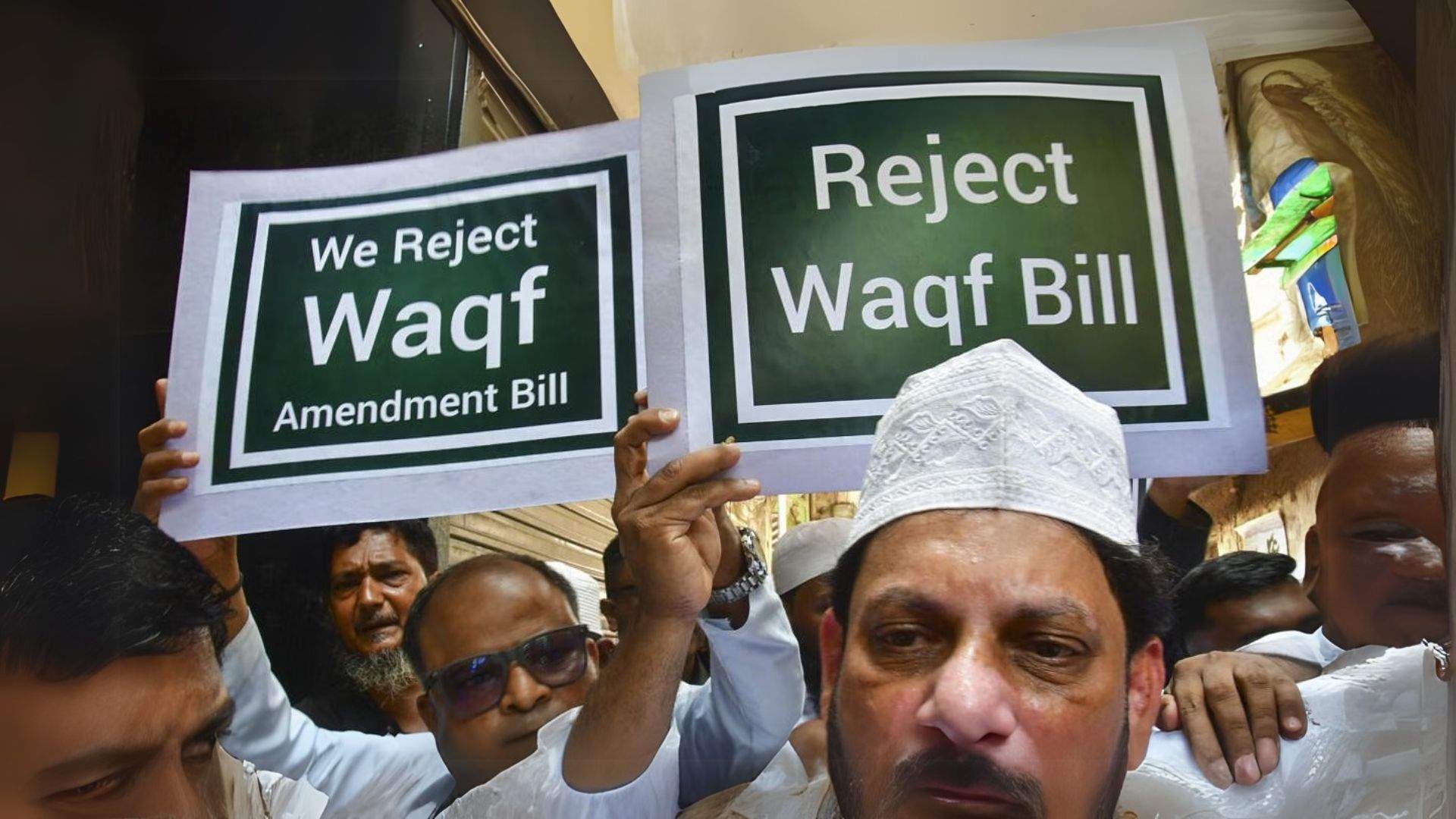Tensions in Bengal Murshidabad’s peaceful North Bengal villages are now etched in violence. What started as non-violent protests against the Waqf Amendment Act has escalated into fatal confrontations, claiming three lives, arresting more than 150 people, and displacing countless families. The atmosphere is charged with fear—Hindu families claim they are being driven out, while officials rush to bring order back.
Table of Contents
What Caused the Upheaval?
Tensions in Bengal Waqf Amendment Bill, recently passed by Parliament, aims to bring significant changes to how Waqf properties (Islamic charitable endowments) are managed. While the government argues it ensures better transparency, critics claim it infringes on religious autonomy.
In Bengal, where communal sensibilities are deep, the law has touched a nerve. Demonstrations broke out first in Kolkata, then moved to Murshidabad—a Muslim-dominated district with a past record of communal harmony. But this time around, something gave way.
Read also: Justice Delayed But Not Denied
From Protests to Bloodshed
Tensions in Bengal On April 8, police and demonstrators clashed. Stones flew, cars burned, and before long, the violence took on a sinister turn—communal tensions erupted. Villagers from both sides got caught in the crossfire.
The BJP asserted that more than 400 Hindu families have migrated from their houses, fearing sectarian attacks. Opposition Leader Suvendu Adhikari didn’t shy away from a statement: “Hindus are being targeted in their homeland. The appeasement policy of the TMC has spurred radicals.”
However, Chief Minister Mamata Banerjee asked people to keep calm, leaving the law making to the centre: “It was the Centre which enacted this law, not us. Only violence hurts society.”
A State on Edge
Tensions in Bengal The Calcutta High Court, terming the situation “grave and volatile,” directed central forces to intervene. Governor CV Ananda Bose supported the move, grateful that the judiciary acted before things got out of hand.
The harm is already done.
Suti, Dhulian, Samserganj, and Jangipur—gracious old towns—are now under prohibitory orders.
Police troop on the streets, but faith in the police is wafer-thin.
Social networking sites spread rumours, making it increasingly difficult to discern fact from fear.
The Human Toll Behind the Headlines
Behind the politics of blame are human beings—shopkeepers who’ve sealed their stores, parents taking children out of school, families loading lifetimes of memories into their cars, wondering if they’ll ever see their homes again.
Rina Mondal, a single mother of two from Suti, spoke barely above a whisper on the phone: “We fled at night. They told us our houses were no longer safe. Where do we go now?”
On the other hand, Mohammad Asif, a local businessman, claims that the violence was hijacked by outsiders: “We’ve lived together for generations. Why would we burn our own neighborhoods?”
Read also: Hands Off Protests
Political Firestorm Ahead of Elections
For Mamata Banerjee, this crisis could not have arisen at a more inopportune moment. With state polls around the corner, her government is already reeling from backlash over the teacher recruitment scam, in which thousands lost their jobs due to corruption. Now, communal unrest could undermine her secular image.
The BJP, on the other hand, is grabbing the opportunity, presenting this as evidence of “anti-Hindu persecution” under TMC rule. It’s a narrative that could redefine Bengal’s politics.
Can Peace Be Restored?
Stopping the violence first is the near-term challenge. Central forces can assist, but lasting healing will take more:
Community leaders must intervene to calm passions.
Misinformation floating around on WhatsApp and Facebook must be counteracted.
Rehabilitation of displaced families cannot wait.
Bengal has witnessed riots in the past—2016’s Dhulagarh clashes, 2018’s Basirhat riots—each leaving wounds that never healed completely. This time, the stakes are even greater.
A Plea for Sanity
As politicians exchange blame, the residents of Murshidabad simply wish for normalcy to return. The true test isn’t restoring order—it’s making sure no community is left behind.
Because when the dust clears, it won’t be court orders or laws that repair frayed trust—it’ll be neighbors opting for conversation over conflict.
For now, Bengal waits with bated breath.






